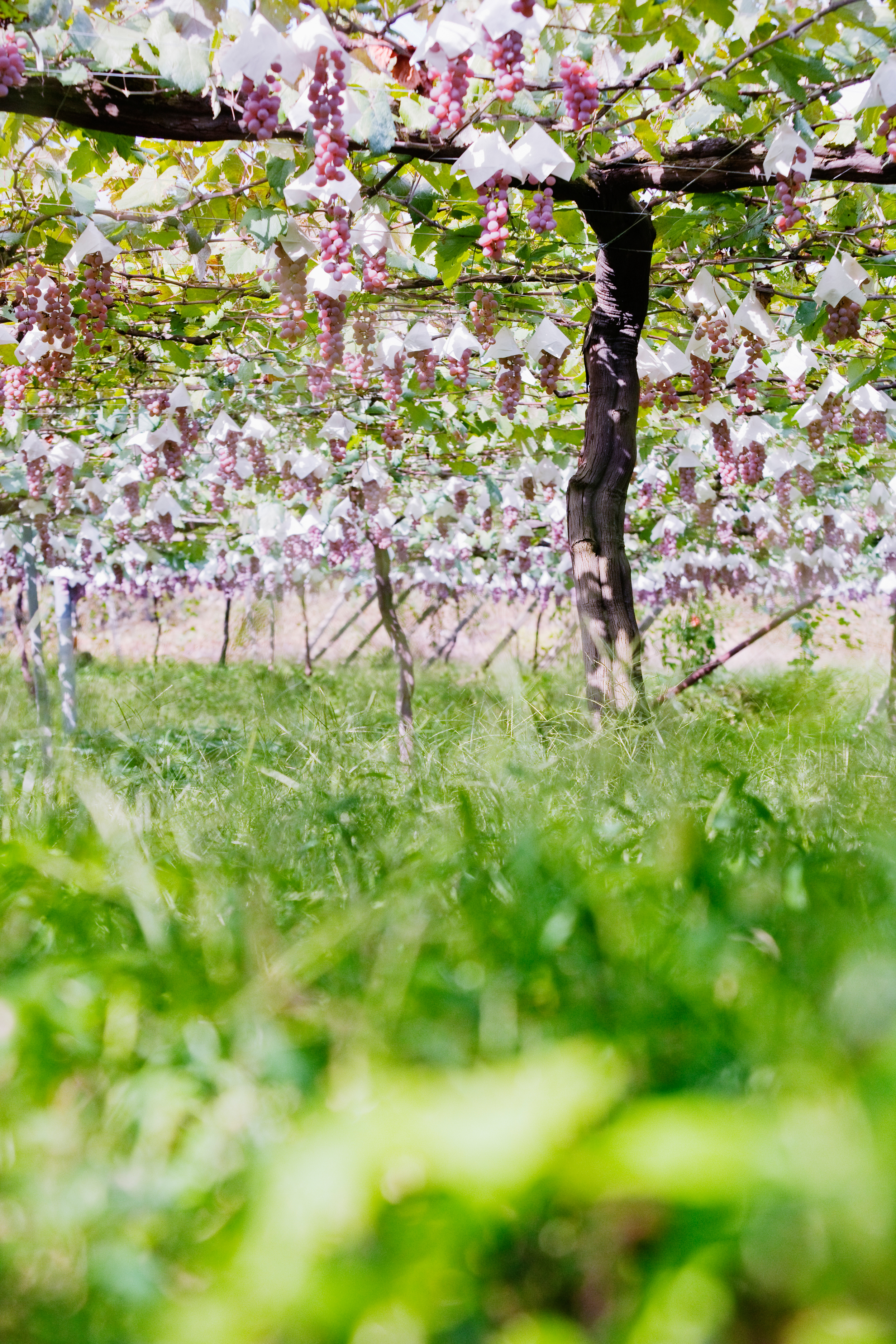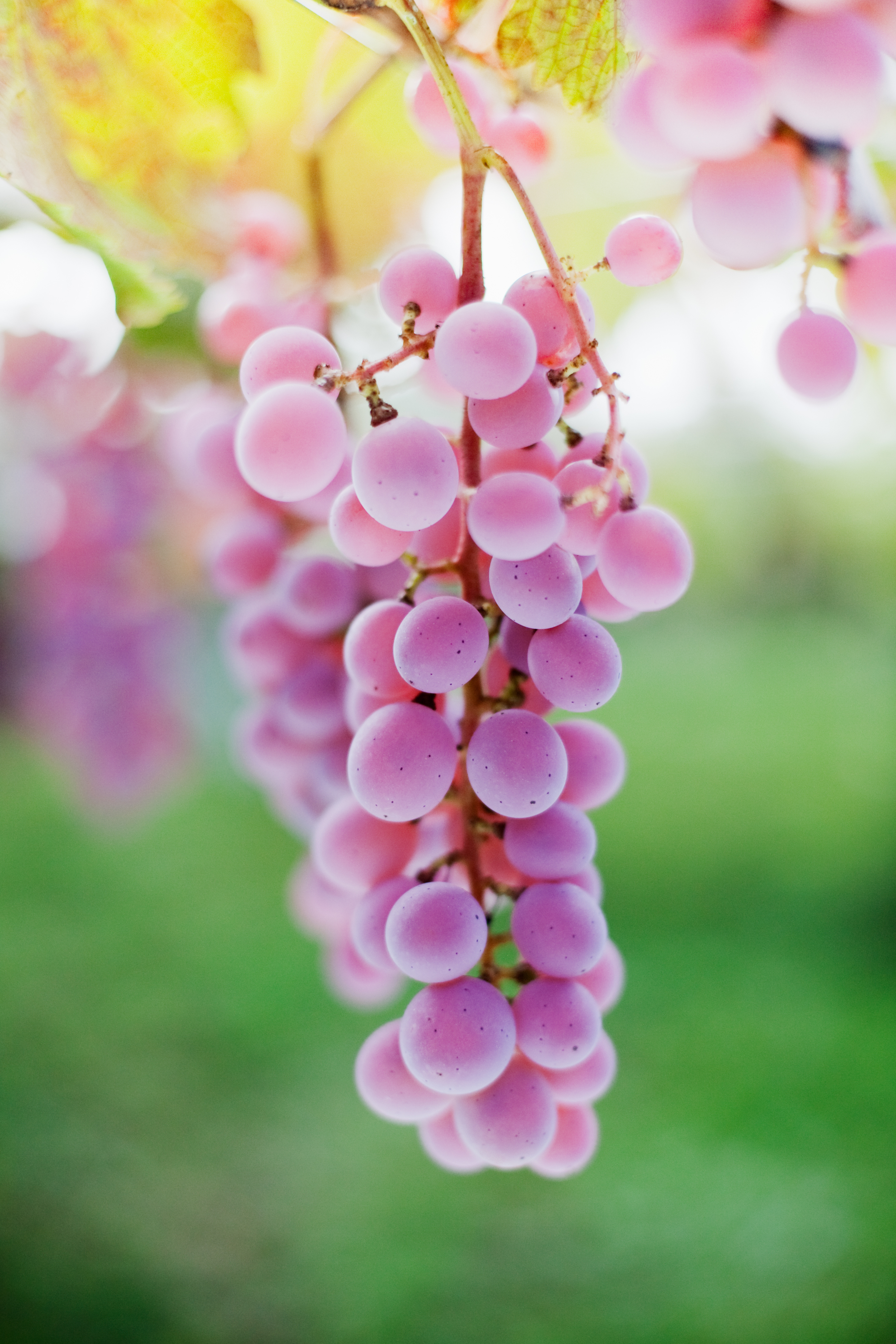Now that Koshu vines are being planted in higher, cooler vineyards, their quality has been elevated too
Once rudely described by Japanese wine writer Hiroshi Yamamoto as “essentially without much personality – like Japanese women”, wines made from Koshu grapes are becoming more datable.
A small bunch of serious Koshu grape growers is elevating the variety – in more ways than one – by planting the vines in higher, cooler vineyards, changing their training systems from the traditional overhead pergolas to vertical positioning systems such as Scott Henry, and they are also experimenting with longer skin, lees and oak contact.
The resultant wines are less neutral and more reminiscent of a Sancerre or Muscadet-sur-lie from the Loire. Some of the barrel-fermented Koshus are reminiscent of Viuras or Sauvignon Blancs.
Generally, the pink-skinned Koshu grapes produce a delicate, light-bodied, refreshing, relatively low-alcohol (10-12%) wine that should be drunk young. This delicacy, which some describe as blandness or lack of character, makes it a good companion for Japanese dishes, such as sashimi and sushi.
“It is beautifully fresh and lively with citrus/grassy characteristics, saline texture, delicate floral nose and fruitiness with high minerality,” says Honami Matsumoto, an expert on Japanese wine, sake and food.
Wine writer Jancis Robinson says: “I must confess that what appeals to me about Koshus is its very lack of brashness, its delicacy, purity, limpidity, and the way it goes so well with the calmer regions of the Japanese gastronomic landscape… There seems to me to be something quintessentially Japanese about a fine Koshu. The word zen keeps coming to mind.”
Koshu is an ancient variety with European origins. It probably made its way to Japan from the Caucasus via China’s Silk Road and was first planted by Buddhist monks. Records show it has been grown in Japan since the 8th century but was not used for wine until the late 19th century. For most of its known history, Koshu has been grown as a table grape and the pergola system used to ensure high yields of pinkish-grey grapes that looked good in fruit bowls. The first record of winemaking is in 1874, when some locals in Yamanashi Prefecture’s Kofu City started fermenting the juice. A winery was established in the region in 1879.
However, it was not until after the Second World War that wine production using the ‘native’ grape became more widespread and it was not until the 1990s that it started being taken seriously by international wine lovers. Under the umbrella organisation Koshu of Japan, they began to export to the UK in 2010.
There are about 80 wineries in Yamanashi Prefecture, about 100km west of Tokyo. This region, overlooked by Mt Fuji and the Japanese Alps, accounts for 40% of Japan’s domestic wine production and about 90% of its Koshu wine. It has about 480ha planted with Koshu vines. There, the vines benefit from harsh winters, long, hot summers, and well-drained volcanic soils. Two of the higher, steeper sites producing some of the best wines are Toriibira and Hishiyama.
The rest of Japan’s Koshu vines can be found in the prefectures of Yamagata, Osaka, Tottori and Shimane. But Yamanashi is its home and Koshu is, in fact, the old name for Yamanashi.
While most of the Koshu wines that I’ve tried are delightfully light, Honami told me: “Koshu is suitable for oaked, un-oaked winemaking, sweet (late harvest, etc), dry or sparkling in style.”
“The lovely fresh yuzu citrus character with light body goes well with white fish”
Each suits a different style of food. A delicate Koshu pairs well with delicate white fish, rich fatty fish, creamy fresh squid and scallops. “The lovely fresh yuzu citrus character with light body goes well with white fish and it also cuts through the richness of fatty fish while the saline character matches the creaminess of shellfish,” Honami told me.
Koshu’s saline and citrus character is also a good foil for crispy tempura. “When it is accompanied with oak treatment, it will match a rich dish like black cod,” Honami added. “How Koshu works is almost opposite to how sake works with Japanese food. Sake has low acidity and more sweetness, which can go well with Japanese food… If you think of the uses of yuzu and kabosu in Japanese cuisine, then you can appreciate how Koshu goes well with various Japanese dishes.”
It’s not just Japanese food that it goes well with either. Koshu definitely goes well with most seafood and fish that are uncooked and vinegar/citrus cured, including Peruvian ceviche and raw oysters (un-oaked Koshu), smoked fish and shellfish (Koshu sur lie), and a sparkling Koshu from the family-owned winery Lumière is known to go well with fish pie.
Lumière, which has 2.5 ha of almost-organic vineyards, also makes a deliciously mineral and nutty Lumière Koshu Sur Lie.
“How Koshu works is almost opposite to how sake works with Japanese food”
Some of the other top producers
Grace Wine in the Yamanashi Prefecture is one of the pioneers in high-quality Koshu wine production and was one of the first to introduce VSP for grape growing. Its typical Koshu is very dry with relatively high acidity and a clean, long finish. Look out for the single-vineyard Hishiyama and Akeno. Akeno is the highest vineyard in Japan and has the longest daylight hours. The 2012 Grace Alenko Koshu is particularly crisp and pleasant, with a little bit of tannin from the grape’s thick skins at the end. From this vineyard, winery owner Shigekazu Misawa and his Bordeaux and Stellenbosch trained winemaking daughter, Ayana (pictured), also harvest high-quality Merlot, Cabernet Sauvignon, Cabernet Franc, and Chardonnay, which seem to go down better in the Japanese market.
The winery was established in 1923 and they produce about 2,000hl of wine a year from 14ha of land.
Yamanashi Wine follows biodynamic farming for many varieties but not yet for Koshu. Its top Koshu is the Sol Lucet, which has a softer and rounder mouth feel and a larger hint of savouriness than other Koshu wines. “I think Yamanashi Wine is a very exciting producer to keep an eye on, especially how it will progress with its biodynamic practice with regard to Koshu,” says Honami.
Marufuji Winery is another family-owned Koshu pioneer. Its Rubaiyat Koshu is slightly smoky and the 2012 that I tasted has a distinctive peachy aroma and flavour. Rubaiyat also produces international varieties such as Chardonnay, Merlot and Petit Verdot.
More good producers
• Alps Wine (uses minimal sulphur dioxide)
• Diamond Winery
• Haramo Wine
• Katsunuma Jyozo (try the Sauvignon-like Arugabranca Isehara)
• Marquis Winery
• Sadoya
• Shirayuri Winery (its Shirayuri L’Orient Barrel Fermented Koshu spends six months in new French oak)
• Soryu Winery (the 2011 is a lot more acidic than the softer 2010)
• Suntory Tomi no oka Winery (the whisky giant has a small wine business; the 2012 is one of its best vintages so far)
• Mars Winery
• Yamato Wine (its Madoromi is fermented in barriques).
And if we could choose only one Koshu wine?
It would be the Grace Cuvée Misawa Akeno Koshu 2015.
For further information: www.koshuofjapan.com
Ayana Misawa, who is following in her father and grandfather’s footsteps by making wine at Grace Wine, believes Koshu’s charm lies in its “special clarity and purity, and relatively low alcohol content”









